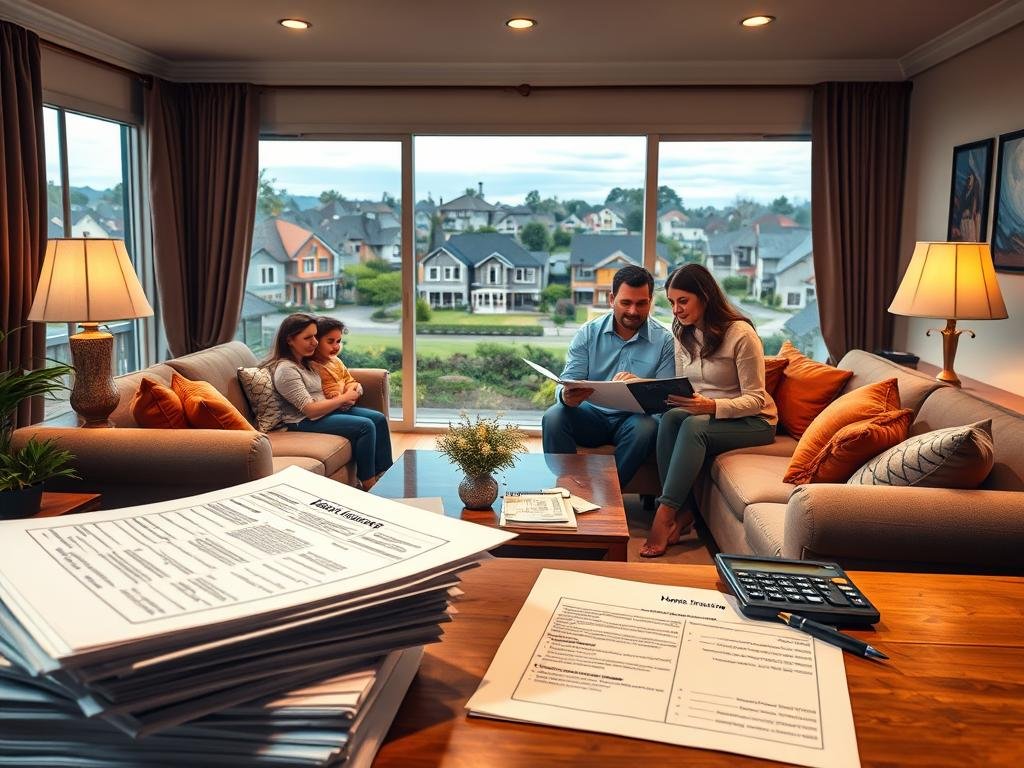You need insurance that matches the true value of your home and possessions. Standard homeowners policies often cap jewelry and fine items at low limits and list contents at partial values. That gap leaves many owners exposed after a major claim.
Specialist placement through the Lloyd’s market gives you flexibility. Syndicates, delegated authorities, and MGAs deliver bespoke terms that scale from a primary residence to seasonal or rental homes. Policies can include replacement cost, extended options, and tiered coverage to protect full value.
Specialist brokers translate your lifestyle into precise coverage. They account for location, staffing, construction, and one-of-a-kind finishes. You get clarity on claims handling and private, long-term service that suits discerning clients in the United States.
Key Takeaways
- Standard policies often underinsure jewelry and collectibles.
- Lloyd’s placements offer tailored terms for unique homes and property.
- Bespoke policies can include replacement cost and extended coverage.
- Specialist brokers help match policy details to your home’s features.
- Delegated authorities and MGAs streamline access to market capacity.
- Prior valuations and documentation speed accurate placement and claims.
Why You Need Specialized Coverage for High-Value Homes and Assets
When your home holds most of your net worth, ordinary policies can leave major gaps after a loss. Typical homeowners forms limit jewelry, furs, and silverware to roughly $1,000–$2,000 unless you add riders. Contents are often set at 50%–70% of dwelling value, which understates what replacement truly costs.
You face concentrated risk because a single property and its collections represent a large share of your wealth. That exposure can force people to downsize or pay significant rebuilding gaps out of pocket if coverage falls short.
Specialized insurance aligns limits and sublimits to your actual inventory of items, schedules collections, and explicitly includes guesthouses, studios, and outdoor amenities. This reduces post‑claim surprises and preserves the full value of your estate.
You also protect the people in your household by adding liability and personal injury extensions that match daily activities and public-facing profiles. Working with a specialist helps you balance breadth of coverage and premium so you aren’t underinsured or overpaying.
What high-value-assets-insurance-lloyds Covers: From Core Protections to Bespoke Add‑Ons
Start by picking one of five coverage tiers to match your home’s scale and the breadth of your items. You can choose from standard through exceptional limits so the policy aligns with your dwelling and contents.
Replacement cost value is available for both scheduled and unscheduled contents. That means items are restored at today’s prices rather than depreciated figures.
Core and optional protections
- Special Perils Personal Property and Inflation Guard to keep limits current.
- Extended Liability and Personal Injury coverage for reputational and privacy exposures.
- Extended Replacement Cost for dwelling to cover post‑catastrophe cost spikes.
- Bespoke add‑ons: Water Backup, Mold, Identity Fraud, and other targeted protections.
- Broader risk structures via brokers: all risks (special form), named perils, DIC, and standalone flood and earthquake options.
Claims commonly include fire, windstorm, flood, and earthquake, subject to the policy terms and sublimits for fine arts, jewelry, and specialty property. You can tailor deductibles and sublimits so the coverage suits your asset mix and risk tolerance.
Eligibility and Appetite: Who This Insurance Is For in the United States
The starting point for placement is clear: dwellings valued at USD 500,000 and above are within the market’s appetite. This product suits owners whose home and contents give their total net worth significant concentration in one property.
Territory rules matter. Policies are available nationwide, but Wind/Hail Tier 1 is excluded from Texas through North Carolina. Texas wind coverage is limited to designated yellow counties. California and Western states require Map Risk Bush scoring to assess wildfire exposure.
Occupancies we insure include:
- Primary, secondary, and seasonal residences
- Full‑time and short‑term rental, ground‑up construction, renovation, and vacant homes
- Multi‑location schedules for several properties across states

Accepted entities span Individuals, LLCs, Corporations, Trusts, Partnerships, and Joint Ventures. Protection classes 1–10 are within appetite, with pricing tied to local fire response and other exposure factors.
Placement is efficient because many risks are handled via delegated authority MGAs and specialist brokers. Provide clear details on construction, security, and defensible space to reduce risk and improve terms.
Cost Drivers and Policy Design: How Your Premium and Coverage Are Determined
Where your home sits and how it was built strongly shape your premium. Location drives exposure to wind, flood, earthquake, and wildfire. Proximity to fire services and elevation from floodways also change cost.
Location, construction and catastrophe exposure
Geography matters. A waterfront or hillside property faces different perils than an urban home. That affects the base cost and available policy forms.
- Catastrophe zones increase deductibles and premiums for earthquake, flood, or wind.
- Construction type, roof materials, and seismic retrofits lower risk and often reduce price.
- Distance to a fire station and defensible space reduce expected loss frequency.
Enhancements that affect price and protection
You can tailor your policy by choosing peril scope (named perils to all risks) and by adding endorsements.
- Inflation Guard and Extended Replacement Cost raise limits and raise cost.
- Extended Liability, Water Backup, Mold, Personal Injury, and Identity Fraud add meaningful coverage for an extra premium.
- Higher catastrophe deductibles lower premiums and free budget for scheduled items or endorsements.
“Review your insurance policy annually to align limits with rebuild costs and market inflation.”
Use carrier and MGA resources for valuations and pre‑underwriting. That helps set accurate limits, speeds placement, and smooths claims if a loss occurs.
How to Buy Through Lloyd’s Market: Brokers, Underwriters, and Next Steps
Begin with a trusted broker or managing general agent to map cover options and gather quotes quickly. Your broker will assess exposures, suggest suitable policies, and place the submission with the right underwriting facilities.
Prepare key documents to speed placement: recent dwelling and contents valuations, fine art and jewelry schedules, occupancy and entity details, construction specs, and invoices or appraisals.
Expect coordinated placement. A broker matches your submission to delegated authorities and underwriters to secure indicative and firm quotes with faster turnaround.
- You gain superior claims service from specialist underwriters and teams experienced in complex homes.
- Tap business resources such as risk assessments, water-loss tech suggestions, and wildfire mitigation plans to improve terms.
- Review peril options—named perils, broader named perils, special form (all risks), DIC, and standalone flood or earthquake—with your advisor.
Tip: Keep photo inventories, appraisals, and invoices current to ensure a smoother claims process.
Finish by reviewing terms to confirm limits, sublimits, deductibles, and endorsements. Continue working with your broker for midterm changes and annual reviews so your insurance stays aligned with renovations and new acquisitions.
Conclusion
Choose protection that reflects the true value of your home and property. A tailored policy and the right endorsements help close coverage gaps and reduce the chance of an unexpected loss.
Work with a specialist broker or MGA to select from five coverage levels and options such as extended replacement cost, water backup, mold, personal injury, and identity fraud. These choices let you align limits to rebuild costs and scheduled items.
You also gain experienced claims teams and years of market know‑how to help clients recover quickly. Prepare valuations, update inventories, and request quotes so your insurance matches how you live and what you own.


